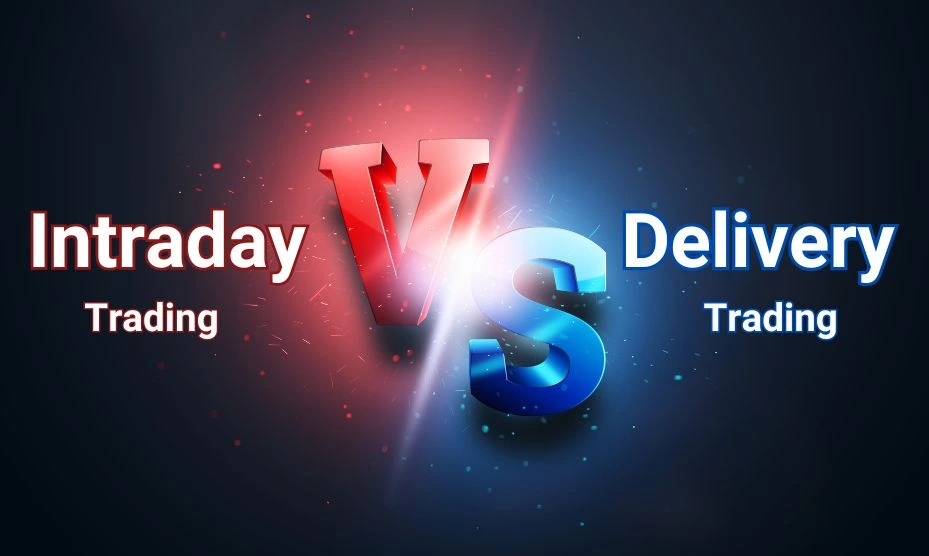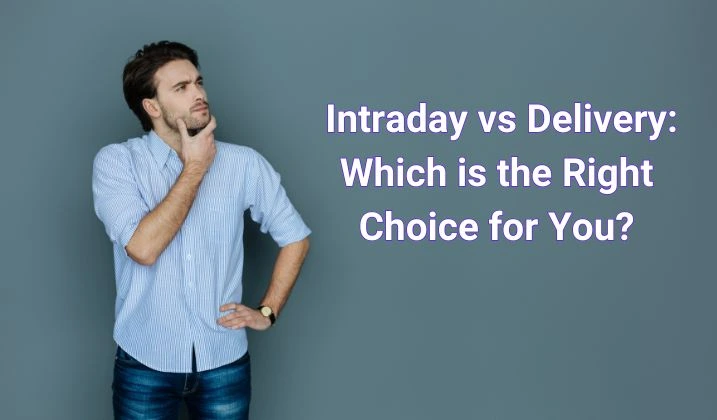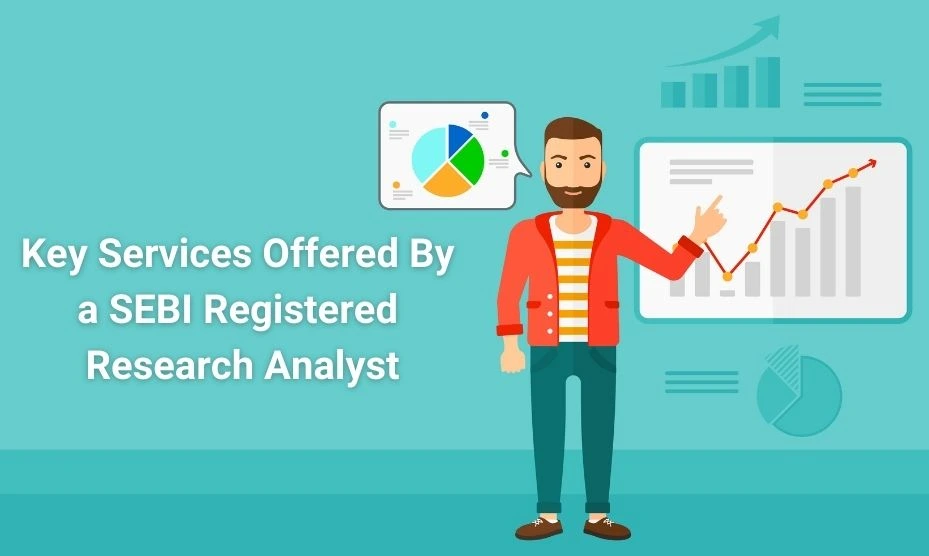
Difference Between Intraday and Delivery Trading
The stock market is not short of opportunities for traders, but two stand out to them. Intraday (Day) and delivery trading are the best selections for quick profits. Although many may mistake them for the same strategy, they aren't! Knowing their features and differences is a way to never confuse the two. Apart from this, it also ensures you maximise them properly and align them with your financial goals.
If you are a beginner who can't tell these two strategies apart, this blog makes it easier for you to do so! Telling the difference between intraday and delivery trading starts with understanding them.
What's Intraday Trading?
This highly demanded strategy involves purchasing and selling shares within the same trading day. The core goal of such a plan would be to capitalise on large short-term price changes.
Positions do not carry forward, and this saves traders from risks that may arise overnight. This quick entry and exit with a profit make it widely used by young and profit-centric investors.
Intraday trade means the process is over within the same day, making it swift. When executing large volumes of these trades, the profits stack up, and this is why this practice is so in demand.
This strategy is fast-paced, and people holding these shares must depend on analysis, price chart reading, and correct predictions to gain.
Intraday Trading Benefits
- • Trades are opened and closed on the same day, leading to no exposure to overnight risks.
- • Lower margin needs mean traders can leverage their funds and trade larger volumes even if it's higher than their fund amount.
- • Since all transactions are over by the end of the trading day, there's a quick accumulation of profits.
Cons of Intraday Trading
- • This trade technique may not be for everyone as it entails much risk if prices drop.
- • Although volatile markets provide profit-bearing positions, they could lead to losses, which can mount fast!
- • You must pay full attention to watch the market, time your entry/exit, and make a quick decision!
- • Some will say this method is complex and requires strict emotional discipline and expert technical analysis skills.
What's Delivery Trading?
It differs greatly from day trading as traders buy stocks with the intention of selling them after an extended time. After buying, these stocks go to a Demat account, where you can hold them till the desired sale date.
The core difference between intraday and delivery trading is the latter isn't time-sensitive! You can hold onto your shares for years if you like!
Because of this, this trading method isn't fast-paced or time-intensive like others. Also, the delivery trading rules are lax compared to the day trade option.
Benefits of Delivery Trading
- • Its slow pace makes it ideal for people who don't have time and don't want the stress of constantly monitoring the market.
- • There is the possibility of massive gains if you hold the stocks for long and prices rise significantly.
- • Holding shares gives traders access to profitable benefits like bonuses and dividends.
- • The delivery meaning in trading allows you to hold stock for a considerable time.
Cons in Delivery Trading
- • There's no leverage, and you must pay stock prices upfront.
- • Traders must stick to SEBI rules and guidelines or find a stock market mentor to help them.
- • It requires long-term commitment, and profit generation is slow compared to fast-paced trading methods.
Intraday and Delivery Trading Difference Table
| Feature | Intraday Trading | Delivery Trading |
|---|---|---|
| Share Ownership | Trades are completed on the same day. | Shares are sent to a Demat account. |
| Investment Duration | Short-term (In the same day) | Long-term (days, weeks, years) |
| Fund Requirements | Low fund requirements (margin trading) | High fund requirements (full payment) |
| Risk | High | Low to moderate |
| Charges | Low fees | Higher fees |
| Profit | Fast gains | Slow gains |
Intraday vs Delivery Trading Charges
A comparison between two popular trade methods should cover all aspects. It gives market participants a clear picture of what they are walking into.
Intraday trading vs delivery trading comparisons wouldn't be complete without looking at this crucial factor. Here's a breakdown of the stark price difference between the two:
Intraday:- • These trades come with high fees due to same-day transacting.
- • Taxes applicable for it are Goods and Services Tax (GST) and Securities Transaction Tax (STT).
- • Higher fees are applicable for these trades due to extensive holding.
- • Both STT and Demat account maintenance fees will be present.
We strongly advise comparing intraday vs delivery trading charges before creating your investment strategy.
Intraday or Delivery: Which is Better for Beginners?
As a beginner, you'll want to stick to a safer option and one that will give you gains. You'll want to approach something riskier and more profitable after gaining knowledge and experience.
If you have some experience but not enough to make a decision, you can consult a SEBI-certified research analyst to help you decide if you can't do it alone.
A delivery trade seems safer, even if profits take a while to show. Beginners with high skill levels and knowledge can use a day trade if they can take on the risk.
However, beginners should take an online stock trading course and start small when entering the stock market.

Combining Intraday and Delivery Trading Strategies
You may have a question about using these two together to diversify your portfolio. This is a thought you'll have if you want to experiment or test your skills on a small scale.
The vital note is to use protection like a stop-loss order and get expert help, especially for intraday trading that has more risk!
Conclusion
Timing is a significant but not the only difference between delivery and intraday trading types. The approach, goals, and amount of funds needed differ for both. The delivery trade option gives stability, while day (intraday) trading gives you fast-paced gains. Understanding them gives you the ability to select one that suits your needs.
Whether you are looking for short-term gains or long-term wealth generation, contact us to discover your options with help from an expert.
FAQs
-
What is better, intraday or delivery?
The best answer to the intraday vs delivery trading debate is found by checking which option suits your risk tolerance and goals. The first option gives fast gains but has more risk, and the second is a safer long-term wealth plan. -
Is delivery trading profitable?
It is profitable but takes time, as the gains are most likely to come after the stock prices have increased over a long period. -
How does margin trading work for intraday and delivery?
In day (intraday) trading, brokers provide leverage, which lets you trade large amounts using less funds. It won't be the case for delivery trading, which allows for sparing leverage or requirements for the full amount. -
Can I sell delivery shares on the same day if I want to?
You can sell these shares on the same day, but it would be down as an intraday trade, not a delivery one. -
How can I convert intraday to delivery trade?
If you are wondering how to do intraday trading to delivery trading, you can do so by selecting the option before the market closure. However, you must ensure enough funds are available to pay the full amount.


